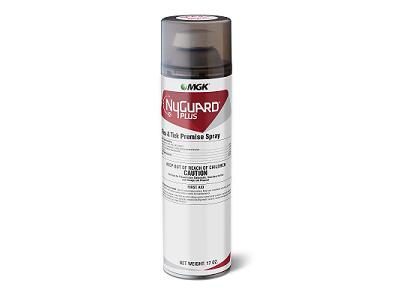
With the ability to vector diseases such as Lyme disease and Rocky Mountain spotted fever, the tick can be considered the most dangerous arthropod in the United States.
As suburban developments expand from urban regions and tick habitats grow due to climate change, we’ll continue to see a rise in disease transmission and a critical need to manage tick populations.
Tick treatments won’t trouble you with these expert tips and product recommendations from MGK.
Tricky Tick Biology
Interesting fact about ticks: They are not insects, they are arthropods.
Ticks are in the arachnid family, which means they are more closely related to spiders and mites. Insects are commonly defined by having one pair of antennae, three body segments, and six legs.
Ticks do not have antennae and have two body segments instead of three. One of the easiest ways to differentiate ticks from insects is to count the legs. Adult and nymph ticks have eight legs, while insects have six legs. Tick larvae can be a little tricky because they only have six legs but can still be discerned from insects by examining the body segments.
Typical Tick Habitats
Ticks are commonly found in tall grasses, woody/brushy areas, and leaf litter. Rodents and other animals also frequent these areas. This is important to note because all ticks feed on blood from vertebrate hosts. Mice are a common host, especially for tick larvae.
Ticks cannot fly or jump and won’t wander too far from areas where their hosts are found. They wait for hosts to pass by and grasp on, a process called questing. If you find a tick outside a typical harborage, there is a good chance that it hitched a ride from its host.
Terrific Tick Management
Prevention is the best strategy for ongoing tick management. Take control of tick infestations by identifying common harborage areas, like tall grasses and thick vegetation, and modify those areas to make them less appealing to ticks, for example, mowing grass and trimming back undergrowth.
Pesticides should be used when vegetation management isn’t possible. For outdoor treatments, opt for products with good residual such as Onslaught FastCap or OneGuard.
For indoor tick treatments, NyGuard® Plus Flea and Tick Premise Spray is a great option. It’s labeled for use in residential and commercial sites to control both ticks and fleas, but also kills cockroaches, lice, dust mites and carpet beetles. The product combines a pyrethroid for fast knockdown, a synergist to combat pesticide resistance, and an insect growth regulator.
NyGuard Plus is formulated to produce a small particle size. The advantage of a small particle is that when actuated, it produces a fine mist, eliminating the issue of product accumulation on the actuator, preventing drips. Other conveniences of this product are that it will not stain water-safe surfaces, and it can actually neutralize pet odor.

